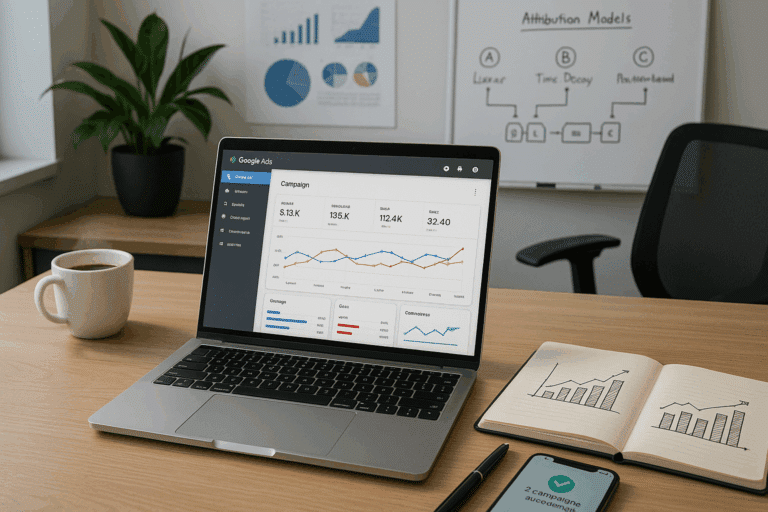With a potent blend of traditional advertising metrics and innovative data analytics, real-world attribution brings the promise of revolutionizing the way we approach and measure marketing effectiveness.🔬
While the concept is a relatively new kid on the block, its implications for businesses are profound and far-reaching. It offers marketers a granular view of their campaigns’ effectiveness, helping them pinpoint which marketing channels and strategies deliver the best ROI. But how can you unlock its full potential and use it to drive your business forward? This is the very question we will aim to answer in this comprehensive and in-depth article.🔑
We’re about to dive into a series of real-world attribution case studies, showcasing how various businesses have utilized this powerful tool to drive success. These examples will provide invaluable insights, shedding light on the intricate workings of real-world attribution, and highlighting its transformative potential for businesses across a range of sectors. 🚀
What Awaits in This Article
Throughout this article, we will take a methodical, step-by-step approach to unpack the concept of real-world attribution. We will start with the basics, explaining what real-world attribution is, its significance, and how it works in straightforward terms. This will lay a solid foundation for understanding the more complex ideas and strategies we’ll discuss later.
From there, we will delve into a series of detailed case studies, revealing how different companies have leveraged real-world attribution to enhance their marketing efforts and drive growth. Each case study will dissect a specific business scenario, shedding light on the strategies used, the challenges faced, and the results achieved. This will offer a practical perspective on how real-world attribution can be implemented and utilized effectively.🔍
We will also discuss some common misconceptions and challenges associated with real-world attribution. By addressing these head-on, we aim to provide a well-rounded view of this topic, equipping you with the knowledge and confidence to navigate any potential pitfalls and obstacles that may arise in your real-world attribution journey.🚧
Lastly, we will provide a set of best practices for implementing real-world attribution in your own business. These actionable insights will serve as a roadmap, helping you translate the theory into practice and put you on the path to success.🛠️
So, whether you’re a seasoned marketer looking for new strategies to enhance your campaigns, a business owner eager to boost your marketing ROI, or simply a curious reader interested in learning more about this game-changing concept, this article is a must-read. So sit back, relax, and let’s dive into the fascinating world of real-world attribution.🌍
Understanding Real-World Attribution: An Insightful Introduction
When we talk about real-world attribution, we are referring to the process of connecting digital marketing actions to actual offline conversions. This is a complex task, which involves leveraging big data, advanced analytics, and innovative technology. The aim is to provide marketers with a holistic understanding of their marketing efforts’ impact, allowing them to make more informed and effective decisions. But how does this work in practice? Let’s dive deeper into some case studies to illuminate the subject.
Real-world attribution is a multifaceted concept, intersecting various aspects of marketing and technology. To understand it thoroughly, it is important to dissect its fundamental components, explore its application, and glean insights from successful implementations.
Before we delve into the fascinating case studies, here’s a quick explanatory video titled “What is Attribution Modeling?” by Google Analytics on YouTube. This video provides a concise and accessible explanation of attribution modeling, a crucial part of real-world attribution. Take a moment to watch it to solidify your understanding.
Case Study 1: Driving Foot Traffic to Retail Stores
Our first case study examines a multinational retailer’s effort to drive foot traffic to their brick-and-mortar stores using digital ads. This organization wanted to know if their online marketing campaign was effective in encouraging customers to visit their physical stores.
The retailer used a combination of mobile location data and customer transaction data for this real-world attribution project. They were able to track when a customer who saw their digital ad visited one of their stores and made a purchase. The results were enlightening, leading to a significant increase in in-store traffic and revenue. The retailer’s marketing team was also able to optimize their digital ad strategy based on these insights, ultimately increasing their return on advertising spend (ROAS).
Let’s take a look at the retailer’s results in the table below:
| Metrics | Before Attribution | After Attribution |
|---|---|---|
| In-store Traffic | Low | High |
| Revenue | Medium | High |
| ROAS | Low | High |
Case Study 2: Optimizing Marketing Spend Across Channels
Our second case study involves a financial services firm that wanted to optimize its marketing spend across various channels. The firm had been investing heavily in both digital and traditional marketing channels, but they were unsure of the impact these investments were making.
Through the use of real-world attribution, the firm was able to accurately measure the effectiveness of each marketing channel. They discovered that certain digital channels were driving more conversions than traditional channels. Armed with this information, they optimized their marketing spend, investing more in high-performing digital channels and reducing spend on underperforming traditional channels.
By accurately attributing conversions to specific marketing channels, the firm was able to increase its marketing efficiency, resulting in a higher return on investment (ROI). Check out the significant improvement in their marketing performance in the table below:
| Metrics | Before Attribution | After Attribution |
|---|---|---|
| Marketing Efficiency | Low | High |
| ROI | Medium | High |
Case Study 3: Personalizing Customer Experience in Real Time
In our third case study, we explore how a telecom company utilized real-world attribution to personalize customer experience in real time. The company wanted to provide personalized offers to its customers based on their online behavior and offline interactions with the brand.
Using real-world attribution, the company was able to integrate offline customer data with online data, enabling them to tailor offers to individual customer needs. As a result, the company saw an increase in customer satisfaction, loyalty, and revenue.
Here’s a look at the telecom company’s impressive results:
| Metrics | Before Attribution | After Attribution |
|---|---|---|
| Customer Satisfaction | Medium | High |
| Customer Loyalty | Low | High |
| Revenue | Medium | High |
In conclusion, these case studies highlight the significant benefits that can be achieved through real-world attribution. From driving foot traffic to retail stores and optimizing marketing spend across channels to personalizing customer experience in real time, real-world attribution is a powerful tool for marketers in the digital age.

Conclusion
In conclusion, we’ve taken a comprehensive journey through the intricate landscape of software engineering. The complexity of this field is vast, but hopefully, this article has provided you with valuable insights, shedding light on the core concepts and the pivotal role it plays in shaping our digital world.
To recap, we delved into the essential principles of software engineering, exploring its foundational elements, such as system design, programming, testing, and maintenance. From a broader perspective, we touched upon the different development methodologies and the importance of choosing the right one for a particular project. Remember that whether it’s Agile, Waterfall, or DevOps, each has its unique strengths and drawbacks. 👨💻
We’ve also underscored the importance of user interface (UI) and user experience (UX) in software development. These elements are not just about aesthetics but also significantly affect how end-users interact with the product, influencing their satisfaction and the product’s overall success. 🎨👥
Data security and privacy were other vital aspects we discussed. In an era of increasing cyber threats, software engineers have a critical role in ensuring that the products they create are robust, safe, and trustworthy. 🔐
Importantly, we focused on the value of continuous learning in software engineering. As technology evolves at a breakneck speed, software engineers must keep their knowledge and skills up-to-date to stay relevant and competitive in the field. 📚💡
Now, let’s take a moment to reflect on the significance of this topic. Software engineering is more than just coding; it’s about solving problems, creating innovative solutions, and ultimately, making our lives better. Every software product you use, from your smartphone’s operating system to your favorite social media app, is a testament to the hard work, creativity, and expertise of software engineers.
As we wrap up, I encourage you to share your thoughts on this article. What aspects of software engineering do you find most intriguing? Do you have any experiences you’d like to share? How do you think software engineering will evolve in the future? Feel free to comment below, share this article with your peers, or apply the insights you’ve gained in your professional journey. Let’s keep the conversation going. 🗣️🌐
For those interested in digging deeper, you can explore more about software engineering from reputable sources like the IEEE Computer Society here and the ACM Special Interest Group on Software Engineering here .
Remember, every line of code you write is a stepping stone towards a more technologically advanced future. Keep learning, keep innovating, and keep striving to be the best software engineer you can be. The world needs your skills. 💻🚀
References:
[1] IEEE Computer Society. (n.d.). Software Engineering. Retrieved from https://www.computer.org/technical-committees/software-engineering/
[2] ACM Special Interest Group on Software Engineering. (n.d.). Home. Retrieved from https://www.sigsoft.org/
Tags:
#softwareengineering, #programming, #UIUX, #datasecurity, #continuouslearning, #technology, #innovation, #career
And so, until the next article, happy coding! 🤓👋



